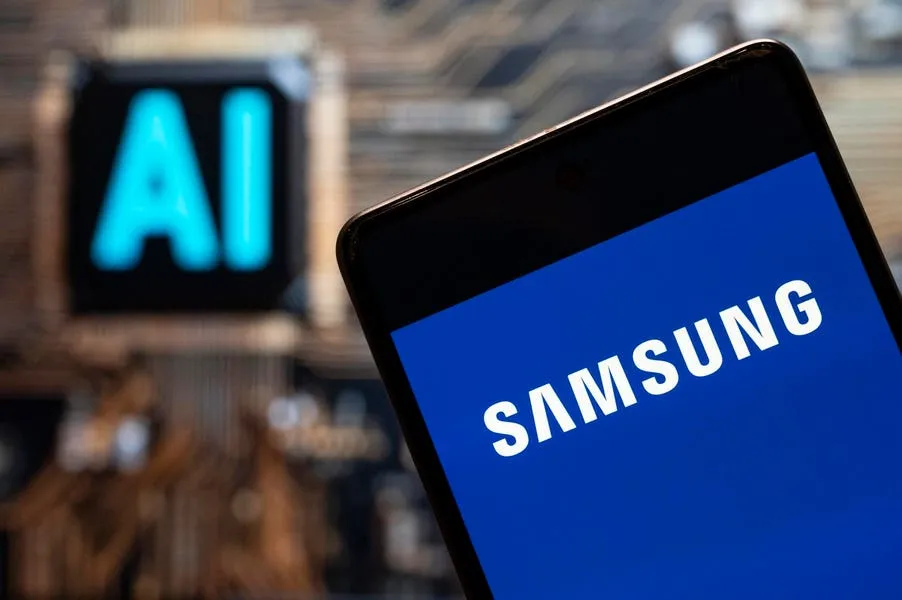In AI research, progress is often equated with size. But a small team at Samsung's AI lab in Montreal has taken another approach that is proving to show great promise. Their new Tiny Recursive Model (TRM) upends the assumption that performance scales with parameter count. With only seven million parameters, this model achieves reasoning results that perform as well, if not better in some instances, than systems thousands of times larger.
With an open-source release on GitHub and its companion arXiv paper, the SAIL lab describes a design for an AI model built around a recursive process that teaches the network to improve its own answers over time.
Instead of building a huge network, TRM uses recursion. Think of recursion like asking, "Is my answer good? If not, can I make it better?" The model tries an answer, looks back at it, then refines it. It keeps doing that a few times until it's satisfied.
In the TRM paper, the authors write they "recursively refine latent and output states without assuming convergence." That means they don't force the model to settle on one fixed answer too soon. Also, they use deep supervision. This is like giving feedback at multiple steps, not only at the very end. It helps the model learn better.
They also use adaptive halting which figures out on its own when to stop refining. It doesn't run forever.
"Models with a small number of parameters can still achieve surprisingly strong performance on reasoning tasks through recursion" researcher Alexia Jolicoeur-Martineau and her team at Samsung writes in its repository shared on Github and research paper published on ArXiv.
The TRM project explores whether recursion can stand in for sheer scale. Instead of stacking more layers, the model refines its reasoning step by step. Each pass through the network generates a new version of the answer, which then becomes input for the next pass.
TRM was tested on logic puzzles and reasoning challenges, not chatting or writing stories. Some of the tasks that it performs well on include solving hard Sudoku puzzles on Sudoku-Extreme where it performed with 87% accuracy, and 85% accuracy on finding paths through tricky mazes in Maze-Hard. It also performed well on abstract reasoning puzzles that can suggest Artificial General Intelligence (AGI) capabilities, scoring 45% accuracy on ARC-AGI-1. For these tasks, the TRM provided results stronger than many large models.
Compared to alternatives, such as a Hierarchical Reasoning Model with 27 million parameters and two additional small networks doing recursion at different frequencies, the TRM is simpler and still beats HRM in generalization.
The numbers would matter less if the concept were unrepeatable, but Samsung released both code and training details.
"We show that recursion [leads] to improved reasoning performance without increasing the number of parameters," write the authors in their paper.
The achievement has significance far beyond the lab. Running a trillion-parameter model requires clusters of specialized chips and a budget that only hyperscale companies can absorb. This is both high cost and energy intensive. A network with seven million parameters can run on commodity hardware and has a lower energy footprint.
For startups, universities, or edge-computing projects, that difference defines who can participate in AI development. TRM's small footprint continues the momentum where reasoning models run locally, without all the weight, privacy, and energy considerations of running in a large data center..
Across the industry, efficiency is emerging as the new frontier. Meta's Llama 3 and Google's Gemini rely on massive scale, but even those companies now discuss pruning and quantization to cut cost. Apple's on-device intelligence initiative follows the same logic: make models smaller, faster, and private. Samsung's researchers are betting that recursion, not compression, offers the next big leap in efficiency.
Alexia Jolicoeur-Martineau, research scientist at Samsung SAIL Montreal and co-author of the paper, frames the work as an argument against simply scaling. Her team believes the field has drifted toward bloat, mistaking volume for intelligence.
The data show that recursion can substitute for depth, at least on tasks that demand structured reasoning rather than linguistic recall. TRM's success on the ARC-AGI benchmark, which tests abstract reasoning on synthetic puzzles, indicates that compact models can achieve generalization without massive size.
Still, the model's domain remains narrow. It hasn't yet faced open-ended language tasks or perception challenges. But its performance points toward an approach that could complement, rather than replace, large language models. Future systems might delegate logical or mathematical reasoning to a recursive sub-module like TRM while reserving text generation for an LLM.
For enterprises, the applications are broad. Companies may not need an all-purpose generative engine for every problem. Instead, they could combine targeted micro-models for specific reasoning tasks, which is an approach that reduces both cost and data risk.
Samsung SAIL Montreal is aiming to make a greater name for itself in the crowded and noisy AI space. Its earlier work on hierarchical models paved the way for this new recursive approach. The broader research community has taken notice. Discussions on open forums point to TRM as evidence that progress may now hinge on architecture, not just on hardware scale.
Whether TRM becomes a core method used by AI companies or remains a research curiosity will depend on how easily others can adapt it. Its release comes at a moment when the AI industry faces increasing scrutiny over cost and energy impact. The prospect of smaller, more sustainable AI models aligns with a rising priority to do more with less.
